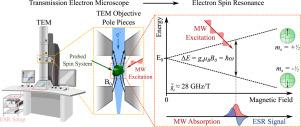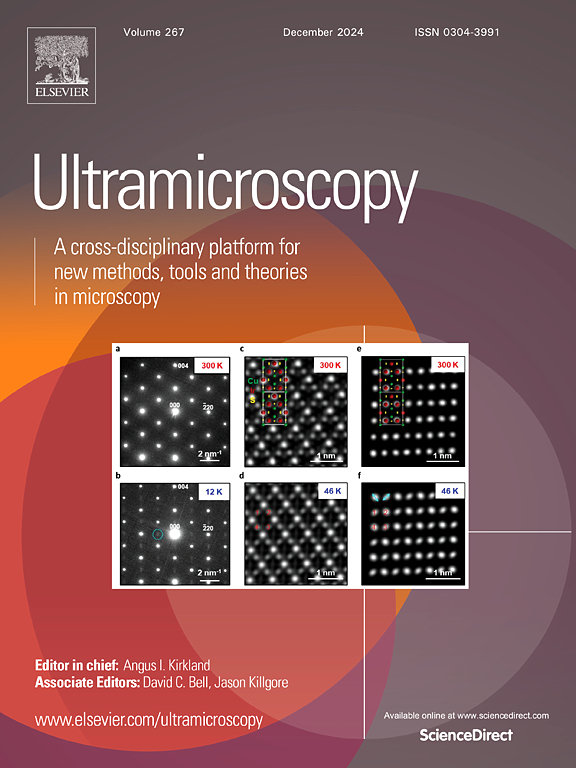透射电子显微镜中的电子自旋共振光谱。
IF 2
3区 工程技术
Q2 MICROSCOPY
引用次数: 0
摘要
相干自旋共振方法,如核磁共振(NMR)和电子自旋共振(ESR)光谱学,已经导致了光谱高度敏感,非侵入性的量子成像技术,在医学,生物学和物理学等领域具有开创性的应用。同时,透射电子显微镜(TEM)提供了亚原子分辨率的详细研究,但往往造成严重的辐射损伤。在这里,我们利用协同作用,并报告了ESR光谱在TEM中的集成。我们的小型化ESR装置针对微观样品尺寸进行了优化,可在标准TEM样品支架上实现,并利用TEM样品片的强磁场来对齐和能量分离自旋态。这种集成将促进自旋系统及其动力学、量子材料、自由基、电化学反应和辐射损伤的原位研究,这些特性到目前为止很难用传统的电子显微镜工具获得。此外,这一发展标志着在纳米尺度上使用高度可控的电子探针进行微波驱动量子自旋研究的重大技术进步。本文章由计算机程序翻译,如有差异,请以英文原文为准。

Electron spin resonance spectroscopy in a transmission electron microscope
Coherent spin resonance methods such as nuclear magnetic resonance (NMR) and electron spin resonance (ESR) spectroscopy have led to spectrally highly sensitive, non-invasive quantum imaging techniques with groundbreaking applications in fields such as medicine, biology, and physics. Meanwhile, transmission electron microscopy (TEM) offers detailed investigations with sub-atomic resolution, but often inflicts significant radiation damage. Here we exploit synergies and report on an integration of ESR spectroscopy in a TEM. Our miniaturized ESR setup, optimized for microscopic sample sizes, is implemented on a standard TEM sample holder and leverages the strong magnetic field of the TEM polepiece to align and energetically separate spin states. This integration will facilitate in situ studies of spin systems and their dynamics, quantum materials, radicals, electrochemical reactions, and radiation damage — properties that have, until now, been difficult to access using conventional electron microscopic tools. Moreover, this development marks a significant technological advancement towards microwave-driven quantum spin studies with a highly controlled electron probe at the nanoscale.
求助全文
通过发布文献求助,成功后即可免费获取论文全文。
去求助
来源期刊

Ultramicroscopy
工程技术-显微镜技术
CiteScore
4.60
自引率
13.60%
发文量
117
审稿时长
5.3 months
期刊介绍:
Ultramicroscopy is an established journal that provides a forum for the publication of original research papers, invited reviews and rapid communications. The scope of Ultramicroscopy is to describe advances in instrumentation, methods and theory related to all modes of microscopical imaging, diffraction and spectroscopy in the life and physical sciences.
 求助内容:
求助内容: 应助结果提醒方式:
应助结果提醒方式:


